Willamette Valley Mushroom Society Newsletter | May 2022
- May 1, 2022
- 17 min read

Morel season is here and it is time for a refresher on look-a-likes. Get
out and take a walk in the woods but make sure to bring your permits and GPS. Make a tasty treat with Morels and keep submitting your observations to iNaturalist!

President’s Message
Greetings everyone!
I hope folks are having an enjoyable and fruitful spring mushroom season. As you may have noticed, if you’re on any of the social media, it’s been an early and abundant start to the riparian morel season. In my household, in partnership with my eleven-year-old, we’ve had some luck strolling along riversides and finding Morels.
There was a time though when I dreaded the arrival of spring mushroom hunting. A few years into my mushroom hunting career I had some familiarity with chanterelles, lobsters, and all the fall arrivals but absolutely zero confidence in my spring mushroom abilities. Inspired by morel and porcini pictures shared within the mycological community, I’d set off to walk along rivers, peruse clear cuts, and gently stroll within recent burns. Nearly all these early, solo forays resulted in absolutely no mushrooms! Only after multiple seasons with zero results did I finally begin to better understand the rhythm, timing, and ecology of spring mushrooms.
My message to you is “stick with it” if you currently don’t find yourself flush with morels. Keep learning, exploring, and try not to feel frustrated if your mushroom expedition ends up “just” being a walk in the woods. As always, reach out to those in the WVMS community with questions or recommendations.
Happy hunting all!
Patrick Heiman
WVMS President
WVMS Member’s Event Calendar
Bookmark this page for WVMS Member Events! This calendar shows all of our planned virtual and in-person events for the year. https://www.wvmssalem.org/member-s-only-events
Phone GPS Apps for Forest Safety
By Brian Sly-Haley
In January 2020, my family decided to embark on a 52-hike challenge (complete with a puppy as well as a three and eight year old in tow). This experience helped us grow closer together as a family and set realistic expectations based on what little legs can do on the trail (hint: it isn’t a 6-mile hike without being carried by dad).

Hiking also taught us a lot about forest safety. With the open foray format this year, I want to share one of the most valuable tools we discovered. Early in our challenge, we tried several handheld Garmin GPS units. They did good at tracking our progress and helping us find our way. But, I couldn’t get used to the smaller screens and they ended up being one more thing to remember when loading the car.
Being an avid runner, I knew there were phone apps that track your progress when running or cycling. That’s when we started looking for GPS apps specifically for hiking. This seemed like the perfect solution since we use our phones as a camera and always have them when hiking.
Phone GPS App Options
Two of the most popular apps for hiking are Gaia GPS and OnX. Both apps are available on the Apple and Google Play app stores. Gaia has two versions: free or paid. OnX only has a paid version with a free 7-day trial period.
Both apps have similar features. I’m highlighting a few of the more useful features below. If you’re interested in trying these on a foray, I suggest you try both to see which works best for you. For most of 2020, we used the free version of the Gaia GPS app and it served us very well. I recently upgraded to the paid version to take advantage of additional features like downloading offline maps and map layers.
Key Features of the Free Gaia App
With the free app, you can use your phone or computer to plan routes and mark waypoints. Marking a waypoint could be useful if there is a particular area you know you want to check for mushrooms. On a recent camping trip, I searched on iNaturalist to find areas where interesting mushrooms were found along our path. Then, I set waypoints to remind me where to look.

The best part of the app is you can use your phone to record your progress and follow your current location on a map. This can be super helpful if you get turned around in the woods and need to retrace your path.
When tracking your progress, the app will tell you elevation, cardinal direction and distance traveled. I also appreciate how it will remember your previous routes and show those on the map as well. The picture shows three different hikes we tracked in Salem.
The biggest drawback of the free app is that you cannot download maps to use when offline or out of service.
Key Features of the Paid Gaia & OnX Apps
The paid version of both apps includes either a monthly or annual subscription. This version will do all the same things as the free version plus a few more important features.

Paid subscriptions will let you download maps for offline use and add layers to the map.
Adding layers allows you to add valuable information like private/public land boundaries and vehicle use maps in the national forests.
Safety Note
Relying on your phone alone comes with some degree of risk. Tracking your location on longer hikes can drain the battery quickly. I bought an external battery on Amazon to charge my phone on the trail in case we are out longer than a couple of hours.
Your phone could also get lost or fall in a creek (like mine did after I slipped off a fallen log). As a good backup, I suggest you follow the foray safety class handout and bring along a compass and map of the area you are going to visit.
Brian Sly-Haley joined WVMS in late 2019 and enjoyed one in-person meeting before everything was shut down in 2020. He is currently participating in the WVMS Funga study group and can be reached at brianlhaley@gmail.com.
Forays
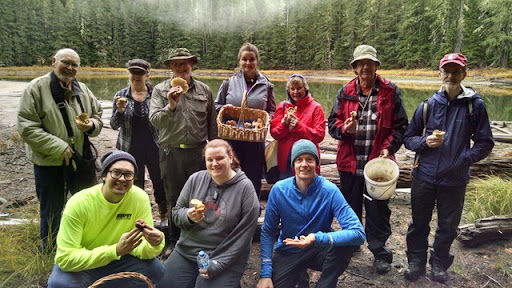
Spring Foray Calendar 2022
April 17th 10am-2pm: Willamette Mission State Park – Group Foray Open to All Members – Complete!
April 30th 10am-2pm: McDonald Dunn Forest – Group Foray Open to All Members – Complete!
May 15th 10am-2pm: Metolius River Basin – Group Foray Open to All Members - Next!
May 28th 10am-2pm: Sisters Area – Sign up Foray
June 12th 12pm-4pm: Ochoco National Forest – Sign up Foray
June 25th – 26th 12pm-4pm: Ochoco National Forest Camping Trip – Group Foray Open to All Members
Whistle Command Update
By Jordan Dodge
Greetings WVMS members!
I wanted to update you all on some changes I made to the whistle commands. Several members have expressed some frustrations to me about attempting to reconnect with their foray buddies using the previous whistle commands on forays. When everyone around you responds to the ‘Where Are You’ whistle it’s pretty much impossible to know which group is yours and what direction to head to reconnect with them. With that in mind I tweaked the previous commands a little to help alleviate those frustrations and added two more commands for emergency situations. I recommend printing these new whistle commands out and keeping them in your foray basket!
1 Whistle - Where Are You?
Only use it if you need to reconnect with your foray buddies.
You should attempt to verbally communicate with your group before using this whistle command.
2 Whistles - Here I Am!
Only for foray buddies to use to reconnect. Do not respond if all of your foray buddies are present or accounted for.
If you are unsure you can do a quick verbal check in with your group to see if you need to respond.
3 Long Whistles - I Need Help!
To be used if you’re lost, injured, incapacitated or suffering a medical emergency!
Only foray volunteers or *capable responders answer, everyone else returns to the meet up location and notify any volunteers in case they couldn't hear the emergency whistle.
If you are near the person who signaled an emergency and you feel that you are a *capable responders go ahead and help them.
4 Whistles - Don't Move, I'm Coming to Help You!
Only for foray volunteers or *capable responders to use for communicating with lost or incapacitated people that help is on the way and to stay put until found.
If you are lost or incapacitated after hearing the 4 whistles response reply with 2 whistles and continue every 30 seconds until found!
5 Whistles - Stop What You Are Doing and Return Immediately to the Meet Up Location!
To be used to signal overdue members to return to the meet up location and during an emergency.
*Capable Responder: Is someone who can navigate in the forest confidently and safely. Has the basic skills, knowledge and abilities to assist in an emergency situation.
Jordan is the Chief Foray Officer for the Willamette Valley Mushroom Society. He is a WVMS Mushroom Study Group Mentor and Mycologist. Jordan owns and operates Lone Oak Micro Farms LLC where he cultivates mushrooms, grows salad greens and microgreens.
If you would like to lead a foray, please contact us at salemmushroomclub@gmail.com and we will put you in touch with our Foray Director, Jordan.
Remember, you must be a member in good standing, take the Foray Safety Class https://www.wvmssalem.org/account/safety-class , and sign up on our website to join a foray. https://www.wvmssalem.org/account/foray-schedule
Mushroom Hunting Permits
Remember that it is not just the WVMS club renewals that need your attention this time of year. If you plan on foraging in the Deschutes, Fremont-Winema, Umpqua or Willamette national forests you will need to have a 2022 mushroom hunting permit. Personal use permits are good for up to a gallon per day (not including Matsutake, you need a separate permit for those). No permits are required for BLM, Siuslaw, or Tillamook state forests. In addition, Willamette National Forest does not require a permit if collecting up to a gallon of mushrooms per day. If you want to collect more than that amount you will need a personal use permit. This year mushroom permits can be obtained over the phone and either emailed or snail mailed to you. Although these phone numbers are for the Willamette National Forest the permit covers Deschutes, Fremont-Winema, Umpqua and Willamette:
Detroit Ranger District (503)854-3366
McKenzie River Ranger District (541)822-3381
Middle Fork Ranger District (541)782-2283
Springfield Supervisor’s Office (541)225-6300
Sweet Home Ranger District (541)367-5168
Identifying Incredible Edible Spring Mushrooms!
By Jordan Dodge
Identifying Features of Morel Mushrooms
Morel mushrooms can appear difficult to identify when you first encounter them. They have a couple of look-alikes that can confuse beginners and experienced mushroom hunters who have never observed or identified them before. However the best way to tell for sure if you have a Morel, a Verpa or a Gyromitra is by cutting the mushroom in half and looking at how the cap attaches to the stem. The Morel has a cap that is inter-grown with the stem, while the Verpa and Gyromitra caps attach to the stem at the top of the cap like a thimble on a finger tip. Once you encounter all of these mushrooms in the wild, telling them apart quickly becomes an easy task.

Some of the key differentiating features to tell between Gyromitra esculenta and Morels are the ridges. G. esculenta has ridges that appear brain-like, wavy and lack distinct pitting whereas the morel has ridges that run vertically with distinct pitting in between the ridges. G. esculenta looks most like true morel and has spores very similar to the morel. The spores are close to the same shape and size, but have a large oil droplet in the center of the spore sometimes accompanied by two smaller droplets on either side of the large oil droplet. You need a microscope with the ability to zoom up to 1,000x to be able to observe the microscopic features of spores.
Verpa bohemica looks most like a half free morel to me and can be easily confused with one. The best way to tell the difference between V. bohemica and a half free morel is by observing how the cap attaches to the stem and the lack of distinct pitting. The half free Morels stem attaches about half way up the cap whereas the Verpas stem attaches at the top of the cap. Verpa stems are slender, narrowly hollow with thick sidewalls and have cotton like fibers in the core. The half free Morel has a large hollow strigose stem with thin sidewalls and no cotton like fibers in the core. You can also tell the difference easily by using a microscope to view the spores. You can technically eat both Gyromitra and Verpa mushrooms, but it has to be prepared just right and it is not recommended. There are so many other safe delectable edible mushrooms that grow in our forests that I don’t believe it’s worth the risk of consuming mushrooms that could potentially make you sick!
Some of the distinctive morels that can be found fruiting in Western North America are Black Morels: Morchella elata, M. conica, M. angusticeps (Prefer burn areas and areas of disturbance); Yellow Morels: Morchella esculenta, M. crassipes (Prefer non burn areas, prefers areas of disturbance and forested riparian zones) and Half-Free Morels: Morchella semilibera (Prefer non burn areas and forested riparian zones).
Identifying Features of Porcini Mushrooms
Identifying Bolete mushrooms can be intimidating when beginning to learn which ones are choice edibles and which ones are not! The features of Bolete mushrooms are very different from your common gilled mushroom and can be confusing. Boletus mushrooms have pores instead of gills that look like a bunch of coffee straws stacked together and aligned vertically. The pores come in a variety of shapes, sizes and colors which is an important feature to note when identifying this genus of fungi. Another key identifying feature is the shape of the stem of the mushroom as they come in a variety of arrangements and colors. It is also important to note the cap shape, color and texture.
One of the key identifying features of the Porcini Boletus is the color of the pores, cap and stem. The Porcini mushroom starts off with white pores that become creamy yellow then turn an olive yellow in maturity and are sunken around the stem appearing adnexed. The pores are round, start out thin and elongate with age. Another key identifying feature is the color of the cap which can come in a variety of shades the most common are a reddish brown, creamy beige, rarely dark brown and white. Additionally the stipe of the mushroom is typically shaped like a club or lava lamp and can elongate over time becoming more slender in appearance. The stipe starts out whitish to cream in color and develops shades of tan as it matures.
The spores of Boletus edulis are an elongated ellipsoid with tapered ends, smooth, shaped like a spindle and olive brown in color.
Jordan is the Chief Foray Officer for the Willamette Valley Mushroom Society. He is a WVMS Mushroom Study Group Mentor and Mycologist. Jordan owns and operates Lone Oak Micro Farms LLC where he cultivates mushrooms, grows salad greens and microgreens.
Book Review

Fungipedia: A Compendium of Mushroom Lore by Lawrence Millman, Princeton U. Press, 2019
By Jim Scheppke
Lawrence Millman puts the “fun guy” in fungi in his Fungipedia, a 200-page A to Z guide that covers the basics of fungi in a highly entertaining way. He’ll remind you of that teacher you had in high school or college who really wanted to be doing standup.
The book begins with Agarikon and ends with Zygomycetes. In between Millman covers all of the major types of fungi and best-known species, along with all of the basic mycological vocabulary in a very understandable and engaging way. The entries are concise and some are illustrated, like an encyclopedia. But this isn’t really a reference book. You will want to read it cover to cover. And when you do you’ll learn a lot that you didn’t know before. As a bonus, the Fungipedia includes entries on famous mycologists and others strongly associated with fungi from centuries ago until the present day.
Millman’s choice of entries can be very eccentric. There is one on Santa Claus (yes, there is a fungal connection), one on Sex, and one on a mushroom that was named after SpongeBob SquarePants, Spongiforma squarepantsii (seriously). And these are just in the S’s.
My biggest laugh in the book also came in the S’s — in the entry for Spores: “The pillow on which you lay your head at night may have as many as 500,000 spores, virtually none of which want to be there.” Of course, as Millman points out, they want to be laying in the forest duff next to a mate. But the problem is, “When a spore walks into a bar by itself, it usually leaves that bar by itself, for the chances of two spores mating is very slim. This is one reason fungi produce them in vast quantities.”
Our mushroom club usually recommends David Arora’s All that the Rain Promises for newbies to mushrooming, as an easy to use (and also frequently amusing) field guide. But in addition to that I would recommend newbies purchase this book, to easily gain a basic knowledge of fungi in an altogether painless way. And even experienced mushroomers will learn from this book and also get a lot of laughs.
Make It From Mycelium
At WVMS we are known for our potlucks and great mushroom dishes. The goal of the ‘Kitchen’ section is to highlight and gather recipes so that in one year’s time we have a cookbook. It will be the classics the club is known for and new recipes from our members.
So how do we do this? In each newsletter we will post a recipe featuring mushrooms that are in season for you to try. We would like you to post your pictures of your cooking adventures on our Facebook page or the WVMS Google Group . Your participation will earn you a ticket into our raffle, frequency and prizes will be determined.
The second way to participate is to send us your favorite mushroom recipe. If there is a story behind your recipe include it. Please post it to our Google Group or you can email it to salemmushroomclub@gmail.com and our board will forward it on. Again, your participation will earn you a coveted ticket into our raffle, frequency and prizes will be determined.
The second section Arts and Craft will post activities using mushrooms. Try them with your family and friends and post the fun on our Facebook page or the WVMS Google Group. Your participation will earn you a ticket into our raffle, frequency and prizes will be determined.
In the Kitchen
Don’t forget to post your food pictures on our Facebook page or the Google Group. Send us your other recipes and food stories for entry into the cookbook and to earn that coveted raffle ticket to our email salemmushroomclub@gmail.com
Last month Jordan whetted your appetite for the Spring Morel season. The weather is right and the mushrooms are fruiting on the valley floor! So how do we prepare and cook them? I go to Forager Chef.com for some great tips and I will be sharing some of their ideas with you here. You can see the entire article at https://foragerchef.com/morel-mushrooms/
Cooking
Now the most fun part, Morels are some of the best eating mushrooms around, but you do need to know a couple things about them:
Never eat Morels raw
Large mushrooms can be cut into halves or dehydrate
Gentle browning will deepen and improve their flavor
If you find perfect young Morels, they can be cooked whole, just make sure to inspect inside for dirt or insects
A Morel allergy isn’t uncommon-even if they’re cooked through
Simple preparations are the best, the more ingredients, the less you will taste the Morels themselves
Should I Soak Morels in Salt Water to Remove Bugs?
Never.
Soaking morels in salt water will ruin them, but there’s all sorts of folk advice that recommends it. Technically salt water is a brine. Bugs and debris float to the top of the salt water not because of a magical cleaning effect, but because water—and especially water with salt in it— causes things to float in it, like the Dead Sea. If your mushrooms have worms in them, dry them, or be at peace with the extra protein.

A Recipe
Morels in the Woods
I believe that the best way to eat any mushroom is in the woods right after you’ve found them. This is inspired by a breakfast that was prepared by Russ C. after a great Morel trip with a few club members and me a few years in the past. This recipe can easily be adjusted to how many mushrooms you have and how decadent you want your dish to be!
Ingredients:
Morels | Eggs- about 2 per person |
Oil or fat of choice | Shredded cheese- about 0.5 oz per person |
Mild onion | Salt and pepper |
Garlic | Chopped parsley |
Clean your Morels and slice them into the rings if large or in half if small
Heat up your pan (cast-iron is wonderful in the woods) and add your fat/oil of choice — you can use anything from butter to oil, Or how about the oil that’s left after you’ve made the bacon or if you want to go crazy some duck fat that you brought with you
Slice or dice some mild onion or garlic. Maybe you found some wild onions in the woods? You can use those here. Add them and the morels to the pan and sauté. Remember you do want to cook Morels thoroughly
While they are sautéing, take your eggs and gently break them into a separate bowl, leaving them whole.
Get your shredded cheese ready and your spices
When the mushrooms are cooked gently dump the eggs into the pan. Do not stir. Allow them to cook until the whites are firm.
Put your cheese on top.
Then gently stir the whole pan together. The egg yolks will continue to cook so don’t overcook them on the stove.
Season with salt and pepper and a bit of chopped parsley and serve to only your best friends.
Option. Dice and cook bacon. Did you find nettles or fiddlehead ferns when you were foraging? Those can also be a wonderful addition to this dish.
How do you like to eat your morels? Let us know! The recipe book is growing each month and we would like your recipes also!
Mariane Pope, Chief Hospitality Officer and Fungi-Enthusiast
Arts and Crafts
Enjoy another way to engage with mushrooms with family and friends. Don’t forget to post your craft pictures on our Facebook page or the Google Group.
What else can we identify in the woods? A great Solo or family adventure.
As we just read in our President’ Message, sometimes Morels are elusive. As a newbie, I have searched and searched and many times all I came home with was plenty of steps on my fit bit or mushrooms that I could not identify. Walking in the woods is great, but without something to bring home it was a bit underwhelming. This all changed last spring when I discovered an app that makes the forest alive with learning and finding other things. It is a part of the iNaturalist series that Autumn describes. It is super easy to use and has increased my knowledge of the flora in the forests!
It is called Seek and can be found both in Google play and on the Apple app store and has a section to link to iNaturalist:
Here are some of my findings this spring!
Whether you are out in the woods alone or with your family and friends, Seek will help you find lots of great things.
Have fun exploring!
Mariane Pope, Chief Hospitality Officer and Fungi-Enthusiast
Study Group Update | WVMS FUNGA
WVMS Funga has successfully worked through Module 3 -habitats, thanks to Diana Reeck for leading those programs. We learned the importance of recognizing habitat for mycorrhizal relationships, especially with our trees. When describing a mushroom for science, you have to look at the color, odor, shape, and texture of the mushroom itself but just as important is the habitat that mushroom was growing in. This is why this unit is so important and we put it at the beginning of the course.
In our next unit, Module 4, we are moving into microscopy. We will be teaching the basics of getting a good section to observe microscopic features like spore texture, shape and even look at basidia, asci and paraphyses for identification.
Our 50 specimens we sent in to FunDiS to be sequenced with a grant they gave us, are almost complete. The sequences were run and we are now in the process of interpreting the results. On the last Mushroom ID session you can watch the recording of Autumn and Henry going through some of the latest sequences. https://www.wvmssalem.org/mushroom-id-sessions
Autumn has volunteered to be a Sequence Validator with FunDiS and has gone through the orientation and preliminary meetings. She is part of a team of validators that is working under Harte Singer to validate over 800 sequences from FunDiS.
Members- check out the resources we will use here https://www.wvmssalem.org/account/studygroup-resources
We would love to hear what you are learning about. Post it to the Google Forum so we can discuss this with you or join in on a Mushroom ID Session.
Book Club
We had our book discussion on April 30th for Entangled Life by Merlin Sheldrake. Our discussions centered around fungi and how the individual is a bit more blurred after reading this book. We noted the new ways of thinking as a spectrum instead of defined boxes and how we could learn to think more as a part of a system rather than human centered. The future definitely involves fungi and we are all so curious to see how things will progress.
The book club is taking a break for the summer. We will resume reading later this year!
Mushroom ID Sessions
The Mushroom ID Sessions are a great place to come learn about what fungi you have found. We love to discuss all your mushrooms and you will leave having learned a little bit more. All of the sessions are recorded for WVMS members. You can find the recordings on our website under the “Education” tab https://www.wvmssalem.org/mushroom-id-sessions.
The next Mushroom ID Session will be hosted by Autumn on Zoom, on May 10th. If you can’t make it and want something identified, you can email photos and a detailed description of the habitat, cap, stipe, gills, color, odor, and any bruising or staining, along with the color of the spore print to salemmushroomclub@gmail.com.
Mushroom ID Sessions will be every other Tuesday through June.
May 10th at 6:30 pm
May 24th at 6:30 pm
June 7th at 6:30 pm
2022 WVMS Mushroom Hunt
We started a new iNaturalist project to invite WVMS members to join us in sharing their fungi finds. We will use these observations in our Mushroom ID sessions and further education in field ID. If you like to find mushrooms and have a smartphone, then you can participate.
Step 1: Create a FREE iNaturalist account: https://www.inaturalist.org/signup
Step 2: Join this project: https://www.inaturalist.org/projects/wvms-mushroom-hunt
Step 3: Take good photos with your camera or smartphone and create your first observation.
Any fungi or slime mold observation you make will automatically show up in this project. It will be a great way to keep track of all of the fungi we find and, in doing so, we can all get a little better at identifying mushrooms.
If you have a smartphone you can download the app https://www.inaturalist.org/
Are you new to iNaturalist and can’t figure it out? Email salemmushroomclub@gmail.com and I will create an online zoom class to help get you set up.
Contacts
Website: www.wvmssalem.org
Email: salemmushroomclub@gmail.com
Board Members: President- Patrick Heiman, Vice President- Autumn Anglin, Treasurer- Joe Harchanko, Membership Director- Beth Lampert, Secretary- Diane Highberger, Foray Coordinator- Jordan Dodge, Minister of Propaganda- John Marikos, Hospitality Committee- Mariane Pope






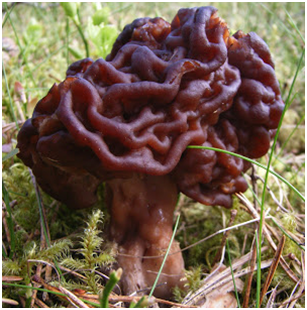

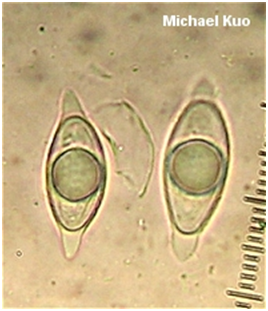

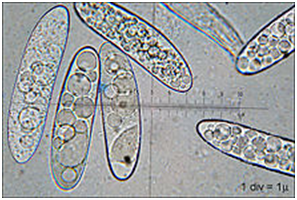
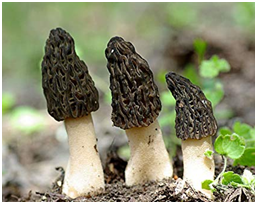
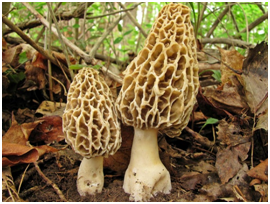

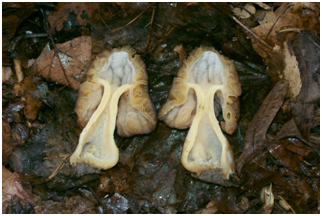
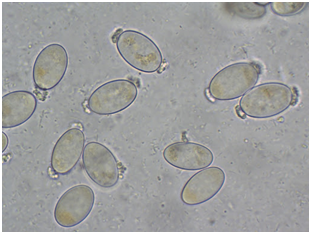
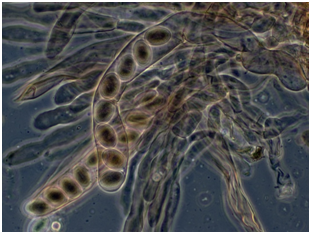
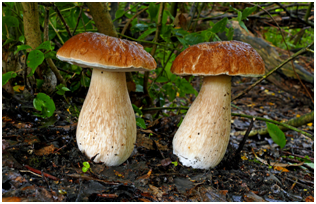
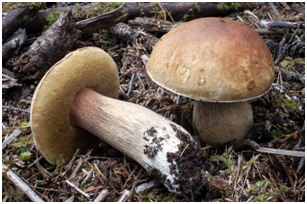
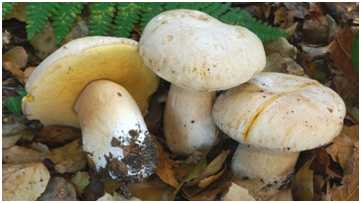
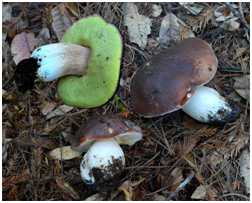
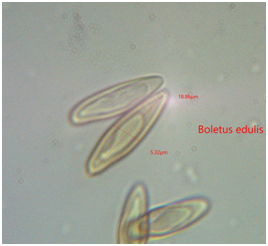
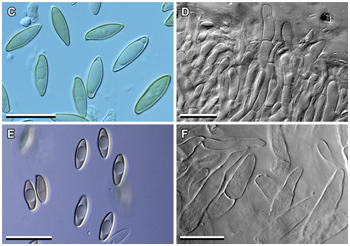

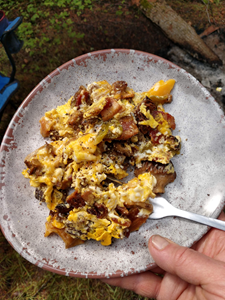

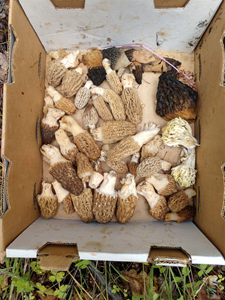

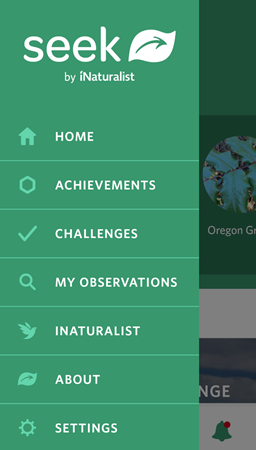

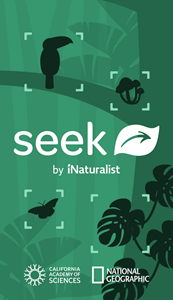

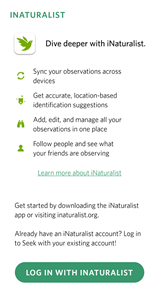


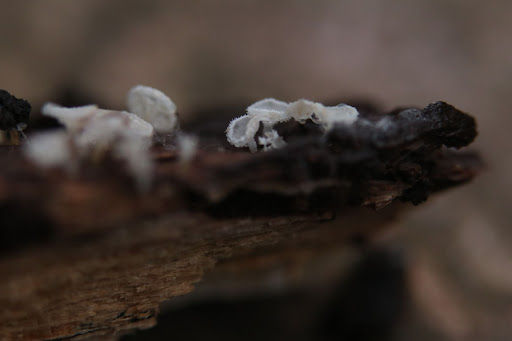




Comments